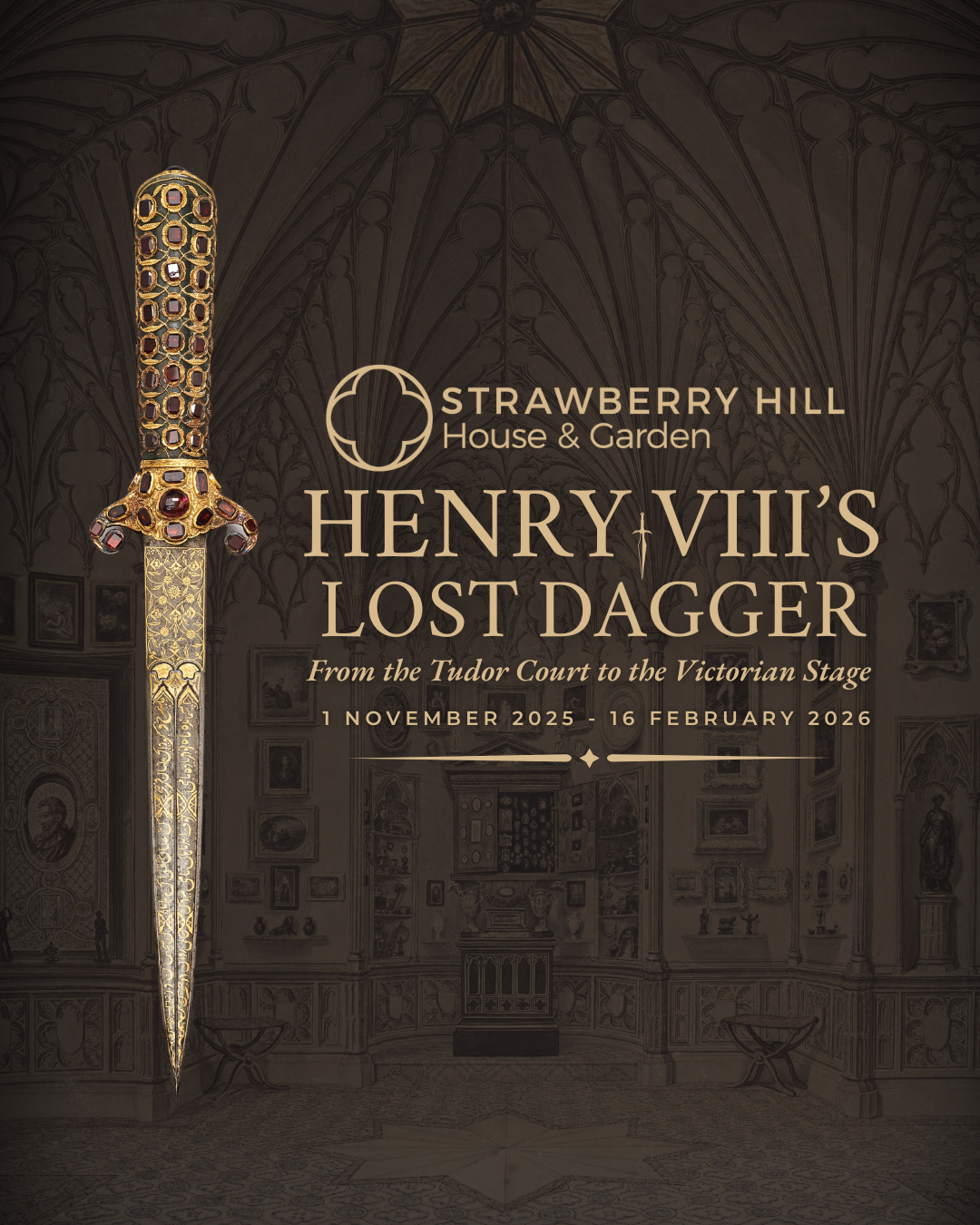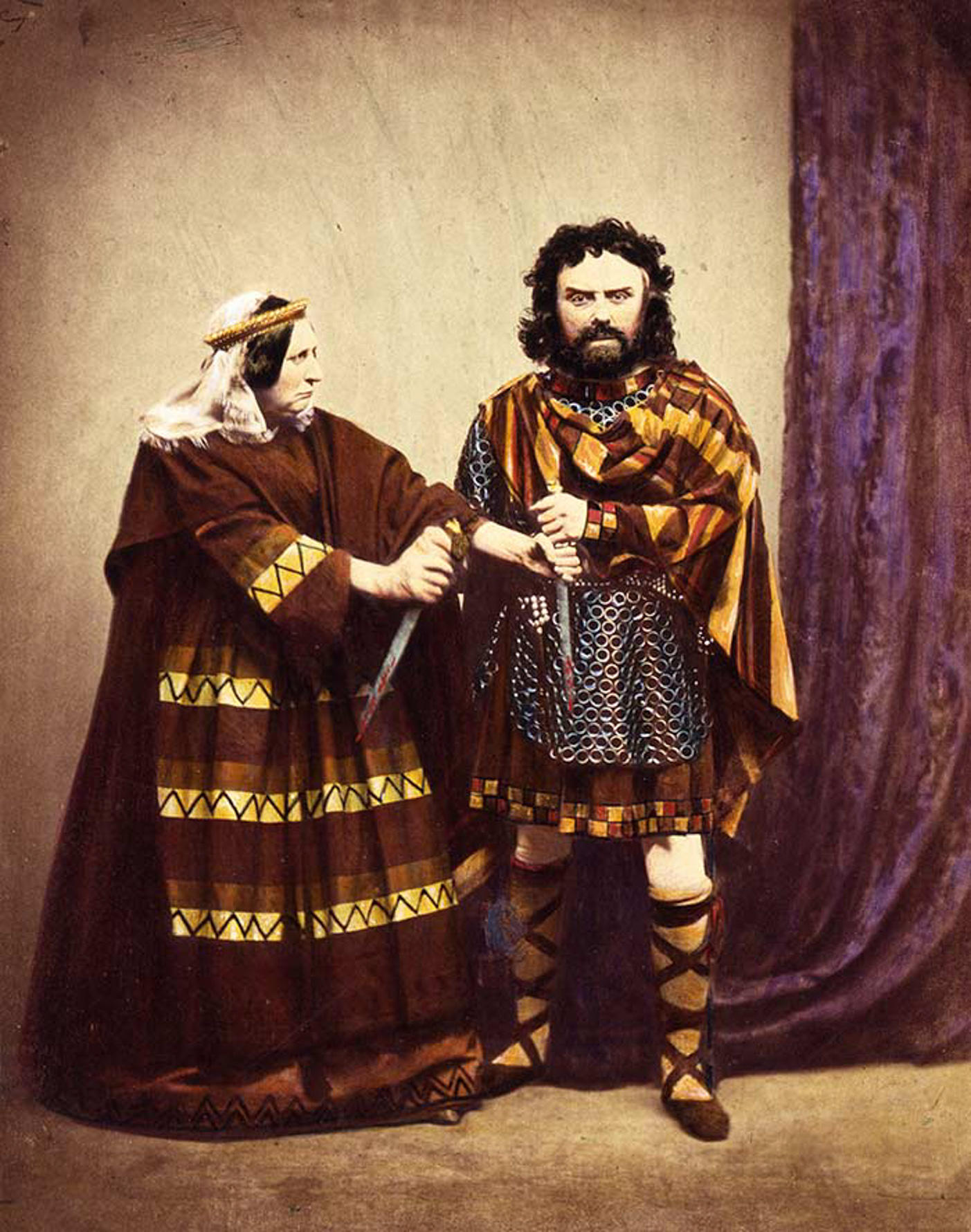A mystery dating back to the court of Henry VIII (1491-1547) has inspired a landmark exhibition at Strawberry Hill House, which reimagines the extraordinary journey of a vanished Ottoman dagger — once believed to belong to the Tudor king — through Gothic collections, Victorian theatre, and the world of curatorial sleuthing.
The search begins at Strawberry Hill, home to Horace Walpole (1717-1797) the writer and collector who launched Britain’s love affair with the Gothic. Among Walpole’s wealth of antiquities was a 16th century Ottoman dagger, which he believed to have once been owned by Henry VIII. Richly decorated, ‘with a profusion of rubies and diamonds’, it was a spectacular object, which several drawings made by John Carter (1748-1817) clearly show.
The dagger’s story is rooted in a time when England’s court was acutely aware of the rising power of the Ottoman Empire under Suleiman the Magnificent (1494-1566). By the 16th century, ceremonial Ottoman arms had become highly coveted across Europe. Monarchs and nobles collected these weapons, not just as tools of war, but as symbols of status and global connection, embodying the complex interplay between politics, prestige, and the allure of the Islamic world.
When Walpole’s collection was sold in 1842, the dagger was acquired by Charles John Kean (1811-1868), the renowned Shakespearean actor and director of Queen Victoria’s private theatricals at Windsor Castle. Kean pioneered what critics dubbed ‘living museums’ on the Victorian stage, using authentic historical artefacts—including this dagger and the famous Cardinal Wolsey Hat (also acquired at the Strawberry Hill Sale and now at Christ Church College, University of Oxford)—to create historically accurate costumes and stage designs. A photograph from 1858 showing Kean and his wife Ellen Tree demonstrates this revolutionary approach to theatrical antiquarianism.
After Kean’s death, the dagger vanished without trace.
Determined to track down this lost treasure, Dr Silvia Davoli, Principal Curator at Strawberry Hill House, launched an international investigation. Using Walpole’s original drawings as guides, her team made a remarkable discovery: six almost identical daggers scattered across the globe—at Vienna’s Kunsthistorisches Museum, Welbeck Abbey, the Kremlin, Budapest’s Museum of Decorative Arts, Kuwait’s al-Sabah Collection, and London’s Furusiyya Art Foundation.
For the first time ever, visitors can see two of these extraordinary daggers—the Welbeck Abbey and Vienna examples—displayed together, alongside reproductions of 18th-century materials related to Walpole’s lost dagger from Yale University’s Lewis Walpole Library.
Recent conservation work confirms their 16th-century origin and reveals sophisticated craftsmanship suggesting they may have been part of a diplomatic gift set, their paths ultimately diverging across Europe’s courts. The daggers invite reflection on how objects and ideas travelled across early modern Europe, connecting the Ottoman Empire with Renaissance courts, and how different eras reimagined these treasures.
The exhibition will be accompanied a fully illustrated catalogue, edited by Paul Holberton and published by Strawberry Hill Publications, featuring new research from leading experts in arms and armour, theatre history, and cultural diplomacy.
As part of the series Strawberry Hill After Dark: The Lost Dagger, visitors can also experience the exhibition by candlelight. These exclusive evenings combine after-hours viewing, a rosewater spritz on arrival, and expert talks on Tudor, Ottoman, and theatrical histories.
Dr Silvia Davoli says: “Like Walpole himself, we believe that touching the past through objects can transport us across time. These daggers have journeyed from Ottoman workshops to Henry VIII’s court, from Walpole’s Gothic fantasy to the Victorian stage – and now they’re ready to tell their story.”
Entry is included with general admission.


This exhibition has been made possible through the generous support of the Rothschild Foundation, the Foyle Foundation, the Decorative Arts Trust, Symbolic & Chase, and several private sponsors.
With thanks to the Kunsthistorisches Museum Vienna, the Portland Collection at Welbeck Abbey, the Royal Collection, and the Garrick Club for entrusting us with such exceptional loans.
Strawberry Hill After Dark: Walpole, Wolsey and the World Beyond – Friday 21 Nov. 2025 | entry from 6pm, talk at 7pm
Step into Walpole’s candlelit castle after hours to explore Henry VIII’s Lost Dagger. Enjoy a rosewater spritz before Professor Glenn Richardson reveals how Walpole’s international outlook compared with Cardinal Wolsey’s vision of England’s place in the world.
Standard Ticket: £25 | Students: £17.50
Insight Curator-Led Tour of Henry VIII’s Lost Dagger for Members and Patrons – Tuesday 25 Nov | 6pm-7.30pm
This special event offers you the opportunity to enjoy an engaging, private guided tour with Dr Silvia Davoli (Principal Curator) after-hours. Numbers are limited and this evening is exclusively for Strawberry Hill House Members and Patrons.
Member/Patron Ticket: £40, which includes welcome drinks.
To support us and enjoy a programme of enriching events please join as a Member or Patron.
Strawberry Hill After Dark: Henry VIII’s Kunstkammer – Thursday 22 Jan. 2026 | entry from 6pm, talk at 7pm
Discover Henry VIII’s Lost Dagger in the hush of Strawberry Hill at night, with candlelight flickering on Walpole’s Gothic interiors. Timothy Schroder FSA takes you inside Henry VIII’s Kunstkammer at Whitehall Palace, where treasures like the dagger once embodied royal power and prestige.
Standard Ticket: £25 | Students: £17.50
Strawberry Hill After Dark: Shakespeare Reimagined – Thursday 5 Feb. 2026 | entry from 6pm, talk at 7pm
Wander Strawberry Hill’s gilded rooms by candlelight, drink in hand, before gathering for Professor Robin Simon’s expert talk. “Nothing is but what is not” traces the rise of historical authenticity on the stage, showing how antiquarianism reshaped Shakespeare in the 18th and 19th centuries.
Standard Ticket: £25 | Students: £17.50